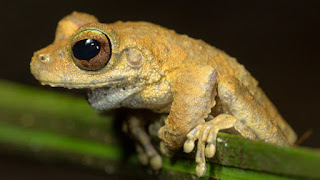8 Curious Facts About Scaleless Snakes - Treehugger
/snake.primary-8a48c634c0be4be8a5a20e62353fb47d.jpg)
Scaleless snakes may seem contradictory — scales are a defining feature of the animal, after all. And yet, snakes without scales have been found in the wild, are commonly bred in captivity, and are even trendy pets.
When all is said and done, these creatures are not so different from their scale-covered counterparts. But there are some distinctions that make them a subject of interest for reptile fans and researchers alike. From their extra-bright colors to their smooth, marshmallow-like skin, scaleless snakes are curious animals. Here are eight facts about them.
1. Their Lack of Scales Is a Mutation
It's understandable to think that a scaleless snake's lack of scales is a deformity — it does seem like a mistake. However, it is technically a mutation. The absence of scales is a recessive trait, best compared to albinism that appears in many animals (including snakes). As a result, it can be passed down, provided scaleless snakes mate with other scaleless snakes.
2. Many Snake Species Are Scaleless
Snakes' lack of scales is not confined to one species — many different types of snakes have been found to have this unique trait. The most common scaleless snake is the brightly colored scaleless corn snake, which is especially popular in captive breeding programs. Other species that have had the trait include the Texas ratsnake, gopher snake, garter snake, and ball python.
3. Scalelessness Transcends Age
Scales are not something that a snake is born without and appear as the creature matures. Therefore, the absence of scales in scaleless snakes has nothing to do with age — they either have the gene mutation or they don't, and that will decide whether or not they have scales for their whole lives. Since their discovery in 1942, scaleless snakes have been found in the wild at all ages, from juvenile to adult.
4. Scaleless Snakes Are Not Completely Scaleless
"Scaleless" is actually a misnomer for these snakes. They do have scales that completely line their bellies — called ventral scales — just like normal snakes. This is important because all snakes need ventral scales to effectively slither to travel — the scales grip the surface so the snake can pull itself forward. A truly scaleless snake would not be able to move.
Additionally, scaleless snakes often have small smatterings of scales along their bodies. There is no real pattern to this, and every snake's sparse collection of scales is random and unique.
5. They Shed
One common question about scaleless snakes is if they shed. Yes, they do.
Snakes shed their skin, not their scales, so the absence of scales has no effect on a snake's shedding. Scaleless snakes shed exactly like normal snakes, leaving behind one tubed piece that was their outermost layer of skin. The primary difference is that when a normal snake sheds, the skin is heavily textured because it bears the imprints of the snake's scales. When a scaleless snake sheds, the skin is smooth — the feeling of it has been compared to that of a latex balloon.
6. They Are Not Dehydrated
It is widely accepted that one function of scales for reptiles is to retain moisture. If that's the case, one would expect that scaleless snakes would be more easily dehydrated because they do not have that method of moisture retention. Yet, science has disproven that assumption.
Research conducted by the Department of Zoology at the University of California, Berkeley compared water loss in skin between scaleless snakes and normal snakes. Results showed that the scaleless snakes lost skin moisture at rates equal to or less than those of normal snakes. In other words, despite not having scales, scaleless snakes sometimes kept themselves slightly more hydrated.
7. They Are More Vibrant Than Normal Snakes
A snake's coloring and patterns are due to pigments within its skin, not its scales. As a result, scaleless snakes do not lose any of their beauty. In fact, the opposite occurs. Without a layer of transparent scales to muddle the skin's pigments, scaleless snakes are often more vibrant than normal snakes — their patterns are clearer and their colors are brighter.
8. They May — or May Not — Be More Vulnerable
Protection is one of the best-known functions for scales in reptiles, referred to as a kind of body armor. So, does that mean that a scaleless snake is more vulnerable? Maybe, but maybe not.
Based on that assumption, captive breeders advise that you do not feed scaleless snakes live prey, in case that prey attempts to bite or scratch the snake. However, when numerous wild-caught scaleless snakes were examined, they had no greater scarring than scaled snakes from the same region. This calls into question whether the lack of scales really means these snakes are any more vulnerable.



Comments
Post a Comment